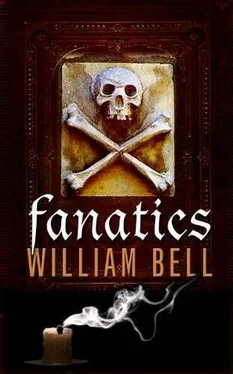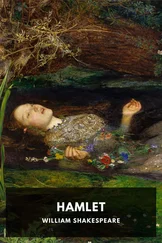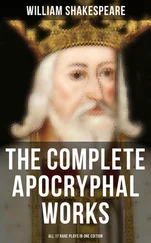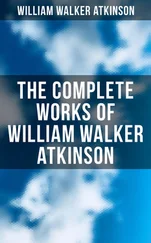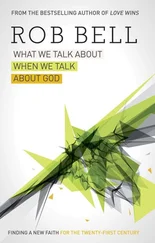After apologizing that under the circumstances she was unable to offer a light refreshment, she continued, “I received welcome news from Florence yesterday. The purchase of the apartment I was seeking has been finalized and the place will be ready for me when I arrive. I shall go there directly from Amerigo Vespucci airport. The apartment is not far from the university. It is on the third floor of a centuries-old building on the Piazza della Signoria. It is quite spacious, with a guest suite.”
“But that’s-” I cut in. The Piazza della Signoria was the city square where Savonarola had been executed.
“I beg your pardon?”
“Er, a beautiful square I heard… er, read.”
The thick black eyebrows rose. “Quite,” Mrs. Stoppini agreed. Then she continued her train of thought. “Miss Skye, Mr. Havelock, I should be most grateful if you would consent to visit me for at least a month, after I am settled and before you”-she nodded to Raphaella-“find travel inconvenient. Nothing would give me greater pleasure than to escort you through some of Florence’s art museums and architectural treasures.”
She stopped. She took a deep breath.
“I shall miss you both deeply. But if I have your visit to look forward to…”
She swallowed. And blinked. Then she straightened her already rigid back and regained her composure.
“Winter in Florence is not the most clement of seasons, but… May I expect you, then, in Italy?”
Raphaella and I exchanged glances. Raphaella nodded, her chin quivering.
The grille on the kitchen wall buzzed. I got up and pressed the button to let the airport limo in. A few minutes later a black van appeared in the window and drew to a stop near the Hawk.
“Your ride is here,” I said unnecessarily.
Two burly men in blue nylon company windbreakers took charge of the trunk and the bags, then climbed back into the van. The driver made a three-point turn and waited, his engine idling.
Mrs. Stoppini was struggling to hold on to her composure. She whispered something to Raphaella, who hugged her, earning a startled look. Then Mrs. Stoppini stepped toward me, her hand extended.
“I shall hold you to your promise to visit me in Florence, Mr. Havelock.”
I shook with her but didn’t let go of the bony gloved hand. “Thanks for everything, Mrs. Stoppini. For the shop lease and the delicious lunches, and for introducing me to macchiato, and for introducing me to Professor Corbizzi’s books, and especially for teaching me that in civilized countries cappuccino is never served after twelve o’clock.”
The ghost of a smile crossed her lips. Before she could escape I wrapped my arms around her stick-like body and squeezed.
“I’ve been wanting to do that for a long time,” I said.
“Indeed,” she replied. And she climbed into the waiting limo, rapped on the back of the driver’s seat, and was swept away.
We watched the van disappear around the bend in the lane.
“You didn’t say that you’d told her about the baby.”
“I didn’t. She just knew.”
“You don’t mean-”
“That she has the gift? No. I would have picked up on that. But she’s a very intelligent and observant lady.”
“I’ll miss her.”
“Not nearly as much as she’ll miss you.”
ON THE EVENING of October 27 it snowed-the earliest blizzard in fifty years. By the time I unlocked the shop the next morning, the storm had marched on, leaving a watery sun in a cold grey sky.
I spent an hour snow-blowing the lane and shovelling the sidewalk to the front door of the mansion, then the path between the kitchen and the shop. As I did at least twice a week, I walked through the house, checking the window latches, the faucets, the radiators in each room.
And as always I spent a few minutes in the library, whose doors were now left permanently open. At last Professor Corbizzi’s favourite room was the way Mrs. Stoppini had wanted it-stripped of every last book, rug, and article of furniture. The majority of the collection had been taken away by a dealer. The alcove books, the Savonarola medal, the priceless copy of Compendium Revelationem had been shipped to Ponte Santa Trinita University in Florence. Mrs. Stoppini had even asked me to “do something” about the secret cupboard, and so I had locked it one last time, disabled the mechanism holding the bookcase section in place, removed the knot from the outside cupboard, and plugged the hole with wood filler, smoothing and staining it to make it invisible. No one who was unaware of the secret would ever discover the empty cupboard.
A couple of days before the blizzard I got a letter postmarked “Firenze.” Fanatics had been accepted for publication, Mrs. Stoppini announced in her cramped, angular handwriting-fountain pen on thick, creamy monogrammed paper-and the book would be off the press next summer. “I shall, of course, send copies to you and Miss Skye immediately the book is available,” she concluded. “I have taken the liberty of dedicating it to both of you. I know the late professor would concur.”
The sun had come out, filling the library with dazzling light reflected off the snow. This must have been how the room looked when Professor Corbizzi had first entered it, full of plans and ideas to fill it with books and to carry on with his work, driven by his commitment to warn his readers about fanatics who use religion as a veil for their hatred. Now that the publication ban on news about the Severn Eleven had been partially lifted, my mother was, in her own way, carrying on his work.
I left the house and returned to the shop. On the bench, awaiting assembly, were the cherrywood pieces I had fabricated to make a cradle. I put on my apron and went to work.
In 2009 at least nine million people were displaced from their homes and communities owing to religious intolerance.
– Harper’s Magazine , November 2009
Fanatics is a work of fiction. Except those noted below, all happenings and characters are imaginary.
The events in the life of Girolamo Savonarola (1452-1498), as described in Fanatics , conform to the historical record. The manner of his death follows eyewitness accounts.
The “Severn Eleven” incident is very loosely based on the activities of the actual “Toronto 18,” who trained in a rural area near Orillia, Ontario, planned several terrorist attacks in the Toronto area, and were arrested in June 2006 and charged with various crimes under the Anti-Terrorism Act. As of this writing, a number have been convicted.
I found the following books useful in my research:
Seward, D. The Burning of the Vanities: Savonarola and the Borgia Pope . Sutton Publishing, 2006.
Martines, L. Fire in the City: Savonarola and the Struggle for the Soul of Renaissance Florence . Oxford: Oxford University Press, 2006.
I would like to thank my publisher, Kristin Cochrane; my editor, Amy Black, for her customary support and insight; and Janice Weaver, for a painstaking copy edit.
I am grateful to my children, Dylan, Megan, and Brendan Bell, for reading the manuscript and offering feedback; and especially to Ting-xing Ye for editorial help and, more, for the kind of faith and encouragement that every writer needs.
***

